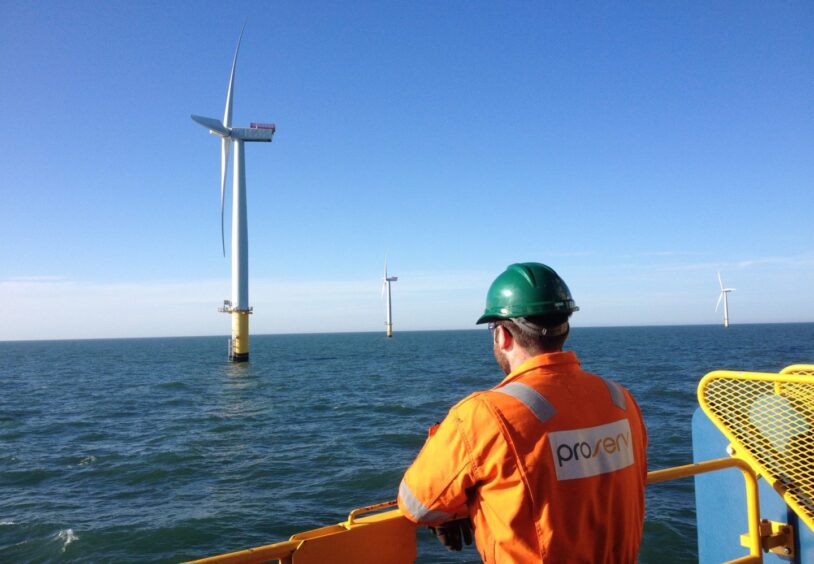
Aberdeen’s Proserv has secured a deal to provide its “game-changing” cable monitoring system on the next phase of what is set to be the world’s biggest offshore wind farm.
Belgian maritime contracting firm DEME will deploy Proserv’s proprietary electro cable guard (ECG) system to de-risk operations on the third phase of the 3.6GW Dogger Bank wind farm project.
ECG uses passive electrical sensors to monitor inter-array cables, identifying signs of transmission cable failure early, allowing proactive measures to be carried out to avoid costly outages.
The technology is currently being used at Dogger Bank A and B, and now C in the multi-phase project 80 miles off the Yorkshire coast, which is being led by the UK’s SSE Renewables (LON:SSE) and Norwegian firms Equinor (OSLO:EQNR) and Vårgrønn. DEME Offshore picked up an initial engineering, procurement, construction and installation (EPCI) contract on the project in 2020.
The monitoring system is also being used on other pioneering Equinor projects including Hywind Scotland, the world’s first floating offshore wind farm off the coast of Peterhead, and Hywind Tampen, an 88MW scheme which was the first to deliver power to oil rigs in the Norwegian North Sea.
Proserv added there are “additional projects in the pipeline” for the technology.
Proserv vice president of renewables, Paul Cook, said the firm’s technology addressed the problem of cable and termination failures which are currently an expensive plague for offshore windfarms.
He said: “As more offshore wind developments come online, unplanned cable and termination failures are an increasing concern. This latest evolution of our breakthrough ECG system offers substantial cost savings benefits to developers and operators, addressing the widespread issue of cable failures, which account for approximately 80% of wind farm-related insurance claims.
“Unlike conventional methods, our solution embeds passive optical electrical sensors directly within terminations, eliminating the need for additional power and telecoms infrastructure at each termination point. This enhances efficiency, streamlines data collection, and provides real-time alerts to prevent downtime, reducing repair costs by up to 80% when interventions are planned proactively.”
The technology was developed in collaboration with Synaptec, a spin out from the University of Strathclyde in which Proserv has a minority stake. ECG combines the Glasgow-based firm’s power system monitoring with Proserv’s engineering and integration expertise honed in the subsea oil and gas industry.
Synaptec chief executive Dr Philip Orr, said the latest deployment of the technology was a “milestone”.
He said: “We’re excited to work with Proserv to lead the way in derisking offshore power generation.
“The future of clean energy depends on reliably transporting renewable power to the grid, and that means taking action to maximise the resilience of offshore power assets.
“This project will be a significant milestone in the development of the offshore wind sector, and we are proud to play our part in making it as successful and productive as possible.”
In July, Proserv has completed a multi-million pound buy-out from its private equity owners in a deal backed by a strategic investor who has worked alongside the business for around five years.
CEO Davis Larssen and CFO Mark Fraser were backed by GIIL, a UK-based investment vehicle of Glenn Inniss, who bought the firm shareholders Oaktree Capital Management (NYSE:OAK.PRA) and KKR (NYSE:KKR). Both investors took control of the group in a 2018 restructuring.
Recommended for you

